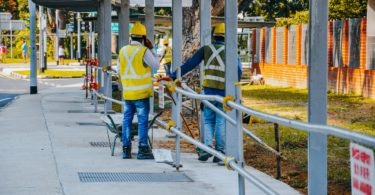In the era of climate change, it is critical for cities in Southeast Asia to adapt to and build resilience against flood risks. Er Tan Seng Chuan, Regional Managing Director (Asia-Pacific), and Rahul Kar, Technical Director for Climate Change and Sustainability at Ramboll Environ, explores how soft approaches—through the use of technologies such as Internet of Things, big data and social media—are complementing hard engineering solutions in flood preparedness and management.
ISSUES AT PLAY
Climate change induces events like drought and flooding. Most Southeast Asian cities are threatened by flooding rather than drought conditions due to the location of developments that are directly dependent on access to water bodies (seas and rivers). Many of these cities are also endowed with naturally occurring low-lying areas increasingly exposed to either rising sea levels or intensified and more frequent rainfall, or both.
Climate variability in the form of intensity of rainfall over shorter durations and faster return periods, coupled with gradual and consistent rise in the seawater levels as global temperature rises, is creating unexpected havoc not just on properties and assets, but also on human activities, health and security. Several leading international and regional research institutes have conducted studies to predict how rapid the climate change induced extreme weather events will recur. Such statistics apart, the flooding incidents across Southeast Asia as recently as 2017 provide confirmation that those research results are majorly correct. In Vietnam, natural disasters—including typhoons, floods, heavy rains and landslides—had left 169 people dead or missing in the first nine months of 2017, while causing damages estimated at nearly USD946 million, according to the latest statistics from the General Statistics Office of Vietnam. They have affected the lives and economic activities of many localities throughout the country.
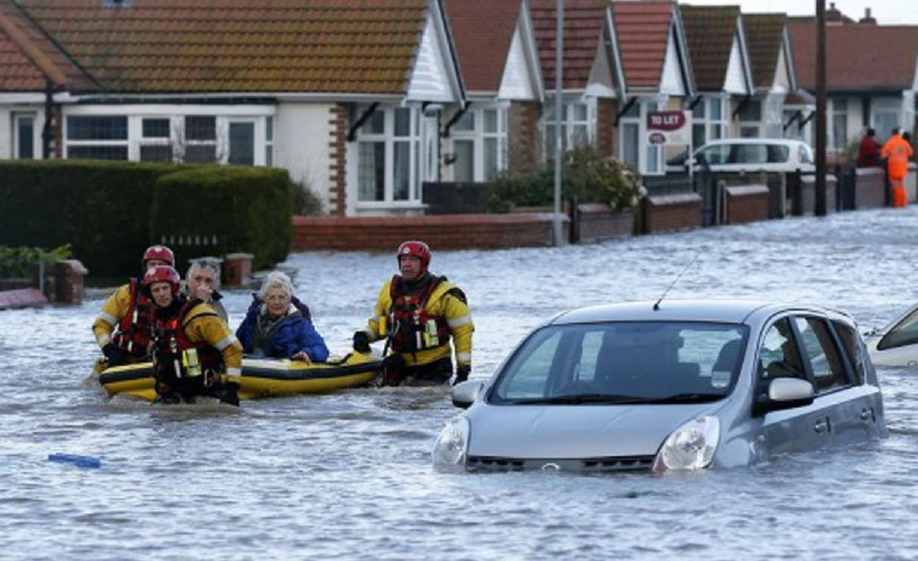
Image courtesy of Ramboll Environ
In addition, published research and analyses by AoN showed that since 2000, floods in Southeast Asia had caused economic damages that exceeded USD76.2 billion. In 2015, insurance losses exceeded USD17.7 billion, with more than 12.4 million homes damaged and 16,000 lives lost. Insurance companies bear the economic brunt of flood events, which confirms again the scale of damage and the likelihood of escalation over the years.
After a flood strikes, the serviceability and utility of the affected property and assets will need significant repair costs to restore back to useable levels. Not only would that cause inconvenience to people, but also create enormous threats to health, safety and security for those exposed to the elements, directly or indirectly.
The probability of such incidences is rising, so are the exposure and impacts, and hence the recurrence of heavy losses and repair costs. Early assessment of the risks and climate-proofing actions will be most cost-effective to avoid high impacts when an incident strikes. Therefore, adaptation and resiliency to flood incidents in Southeast Asia has become one of the most relevant issues to address as soon as possible.
ADAPTATION AND RESILIENCY PLANNING
Technologies including satellite-based resources and climate/weather models, combined with engineering solutions, have reached levels of maturity whereby forecasting and advanced preparedness could be delivered easily and efficiently. Through the use of such technologies, the development and delivery of engineering solutions have become more focused on the type of impact as relevant to where it would occur. However, such solutions could sometimes be costly and take a longer time to implement.
However, it cannot be assured that these solutions will fully protect against an impending event if the design did not consider the local context. Instant updates on what has happened and what is expected in the event of a major incident like a flood that is impending or has already occurred may not be available. But these updates can prepare people to take immediate safeguards for themselves, their families and communities, until the time when emergency relief for flood damage has arrived.
Today, alternative and faster communication facilities using resources based on the Internet of Things (IoT) and social media networks have proven to be reasonably reliable sources of instant updates across jurisdictions, without constraints of any boundaries. Such resources could equip city administrators with the ability to procure, process and transmit rapid solutions and guidance to people in affected or likely to be affected locations.
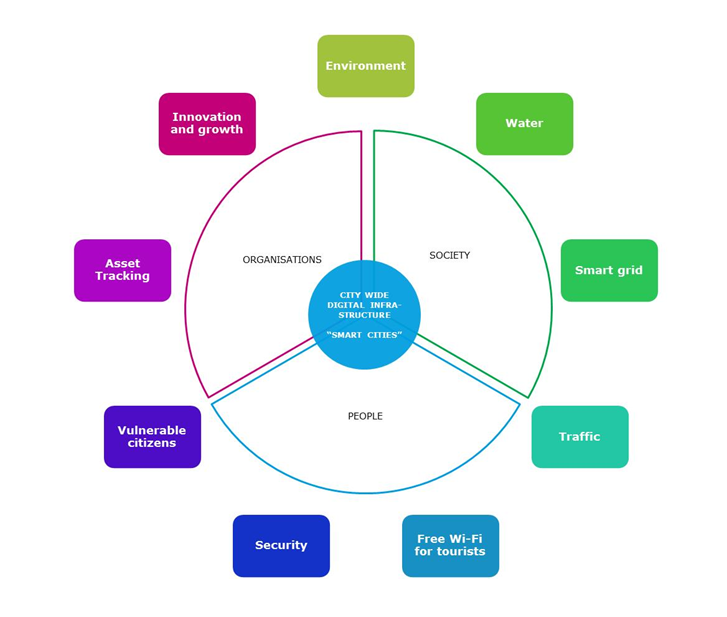
Image courtesy of Ramboll Environ
As a city that is increasingly threatened by the dual impacts of rising sea levels and more intense spells of rainfall, Singapore is significantly vulnerable to natural disasters. According to information published by the Organisation for Economic Co-operation and Development (OECD), extreme weather events could lead to serious economic losses to assets in Singapore. The collateral damage from such events will be on the softer side, which is related to public health, safety and security, the economic value of which could be any multiplier of initial damage to hard assets.
In the case of Singapore, the Info-communications Media Development Authority (IMDA), National Environment Agency (NEA), Public Utilities Board (PUB) and other agencies in Singapore receive enormous volumes of data every day and throughout the years (big data). Such data, if processed for providing instant updates on what is likely to happen from weather events and how to respond when something has happened, will significantly reduce the scale of emergency response required as well as angst among people who have been affected.
One example of the benefits of big data is that the city administrator could provide relevant information to the people with early warning from natural disasters such as flood events. A related benefit would be improvement in resiliency against physical, social and cultural threats that a natural disaster could bring about.
Such solutions and benefits from the use of big data and IoT are applicable to all other cities across Southeast Asia, where internet networks and Wi-Fi systems are in place. Exhibit 1 provides an illustration of how big data has been utilised in Japan to assist the city administrator to plan for and execute disaster response.
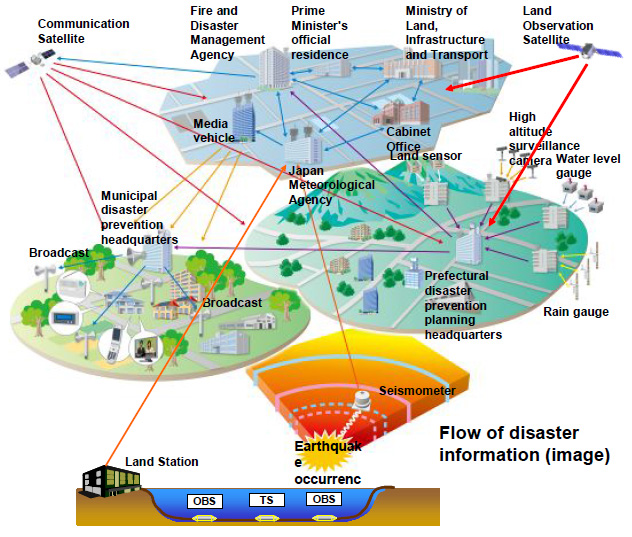
Image courtesy of NEC
IOT FOR FLOOD RESILIENCY – MOBILISATION AT SCALE
Coupled with IoT and social media, the big data based applications could be made more flexible and user-friendly in disseminating information instantaneously to recipients for flood preparedness and management. Hence, the use of these softer, less expensive and more rapid communication channels will aid flood-related adaptation and resiliency needs faster than sole use of engineering solutions.
Singapore has been successful in managing its water resources, based on the combined strategy involving rainwater harvesting in its reservoirs, desalination of seawater and recycling of wastewater after treatment. These are all engineering marvels that Singapore prides itself on. The next challenge will be integrating the extreme weather flood management into the existing water resources strategy.
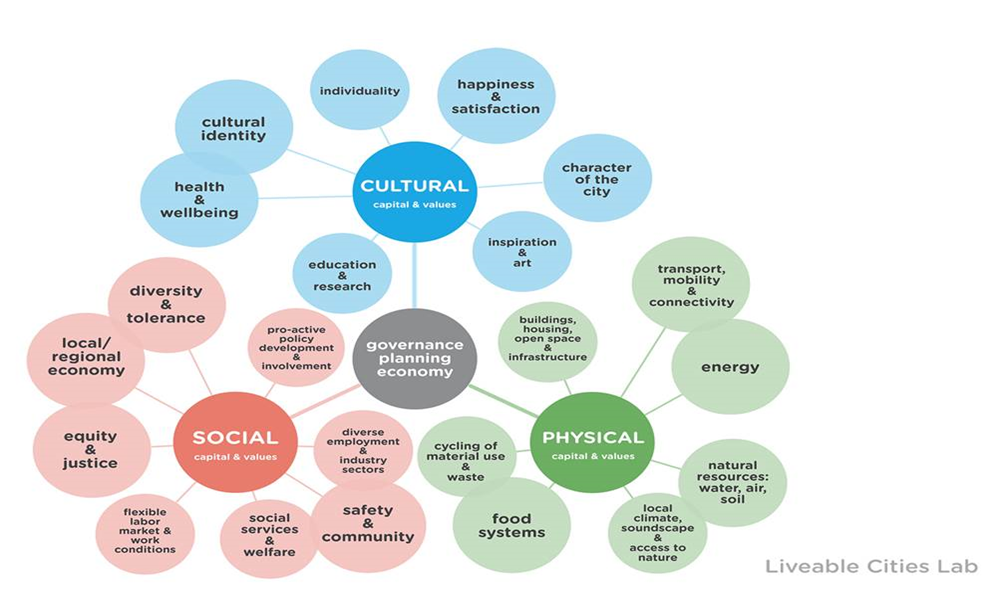
Image courtesy of Ramboll Environ
This challenge has added complication to the existing water resources strategy. However, with advanced forecasting modelling technology and supported by engineering solutions, the best applicable solution could be determined in meeting the socio-economic requirement. While engineering solutions have existed and improved over the centuries, they have not kept pace with the rapid changes in weather events like flooding due to inherent lack of flexibility in hardware solutions comprising investments in infrastructure that require enormous amounts of processes and approval steps. This has created a gap in the ability of city administrators to deploy rapid response solutions at scale to reach impacted lives at once. Some of this gap could be bridged to quite an extent by using IoT and social media that have demonstrated flexibility and user-friendliness in many other sectors and domains. The response time to procure, transmit, analyse and feedback, and the cost of doing so are enormously efficient for mobilisation at scale.
The IoT and social media feeds at scale could be structured as follows:
• Forecast for flooding based on big data. The public can take safeguards against potential inconveniences and impacts including losses, which is particularly useful during flash floods.
• City administrators and relevant flood control agencies will have time to check that floodwater collection and diversion systems are ready to respond as soon as required. This will facilitate prevention of extensive damages to assets, inconveniences, and generally safety and security.
• Collected water from flooding to be harvested to the extent possible. In Singapore’s situation, harvesting of such water could potentially reduce dependency on desalination and imports.
Overall, this above structure would be unleashed by significant flexibilities in flood management and water demand management at a primary scale, and reduce the socio-economic impacts at a secondary scale with insignificant additional costs to the government.

Image courtesy of Ramboll Environ
CASE STUDY ON THE USE OF BIG DATA AND IOT IN URBAN PREPAREDNESS
One of Ramboll’s pioneering projects for the City of Copenhagen focused on the use of available data and communication tools. Among various data types and layers of the city, water/flood management was one of the key areas. Structured in the form of a pre-feasibility study, the data types were grouped in three main categories of benefits:
• Society: benefits were illustrated in terms of environmental, energy and economic factors
• People: benefits were illustrated for services surrounding citizens and users of the city
• Organisations: benefits were illustrated for organisations, such as private and public companies, in terms of optimisation and innovation.
In consultation with the city administrators, Ramboll identified specific cases and developed specific ‘use cases’ within each domain shown below related to issues deemed relevant to the residents of Copenhagen. The pre-feasibility study by Ramboll resulted in the creation of the ‘Copenhagen Connecting’ business case that needed to be seen in combination with the city’s strategic approach. The city domains were mapped in three dimensions to reflect their interdependencies and usefulness of the available information (big data):
• City Grid occupies two dimensions and focuses on the ways in which different aspects interact (e.g., transportation layout versus urban spaces)
• Different layers in the city (e.g., physical design, governance, demography, etc.)
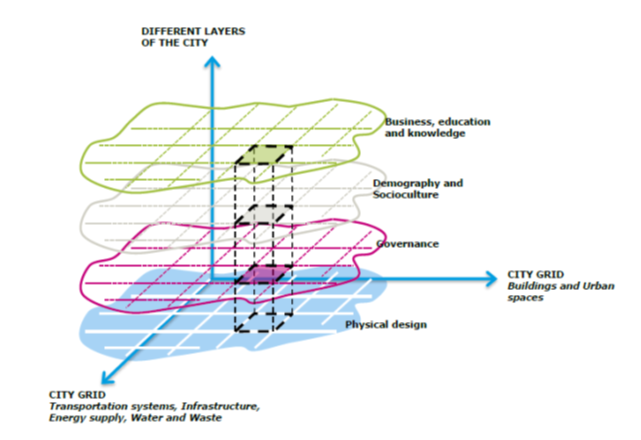
Image courtesy of Ramboll Environ
How does each success factor measure up against preconceived objectives? Our work enabled the following success factors for the city administrators for Copenhagen:
• A strong and guiding political vision
• A holistic approach to planning/urban developments
• A structured approach to dialogue with citizens and investors
A pragmatic and honest view was taken that the city government/administration alone cannot determine the immediate response needs and delivery, but the stakeholder/public feedback to learn from previous challenges will help.
That view helped in structuring the approach more meaningfully in an inclusive way by:
• Guidance on how the city communicates with investors
• Very clear connection between budgets and plans
• Overview of past investments and investment needs
• Promoting dialogue and increasing investor certainty
• Investors surveys
• Involvement of citizens: not only in hearings and formalised engagement processes, but also in structuring of co-creation processes
CASE STUDY ON CLIMATE PREPAREDNESS IN URBAN ASIA
In the Asia-Pacific region, Ramboll was engaged by the Asian Development Bank to provide technical assistance on climate-resilient urban infrastructure in cities. Six pilot cities from five countries including Fiji, Mongolia, Myanmar and Vietnam were selected. Among other things, a rapid appraisal assessment of current infrastructure (taking into account gaps and future needs) and vulnerability to future climate change impacts was provided.
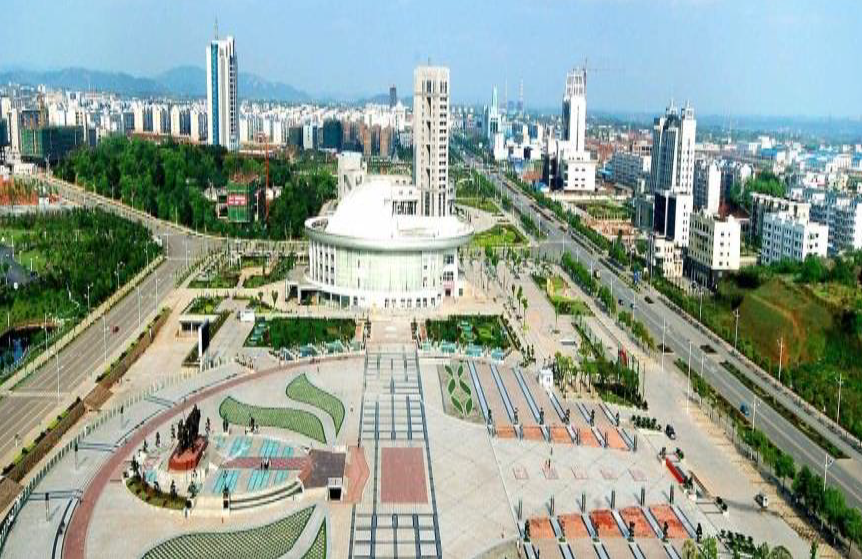
Image courtesy of Ramboll Environ
The assessment revealed that cities in Asia have yet to equip themselves using available IoT technologies. The cities in Asia are burdened with growing urban migration and infrastructure development, as well as lack of resources to proactively respond to climate impacts. The assessment also explored financing needs for improving urban infrastructure and building new ones using a low-carbon growth pathway, for which financial options were also explored. This assessment is expected to be extrapolated to cities in ADB developing member countries with populations greater than 750,000 and growth rates exceeding 30 per cent by 2030.
LESSONS LEARNT
Scientific research and physical evidence have conclusively proven that extreme weather events like floods and flash floods are increasing in terms of intensity and frequency. While engineering solutions exist, they require considerable time to get implemented. Further, the adequacy of installed solutions is never complete in addressing risks and exposures. The assets and populations remain at risk due to such gaps.
Recent developments in the space of IoT and successes in rapid communication using social media feeds could bridge some of the critical gaps by providing advanced forecast and instantaneous updates on status changes, as well as being able to facilitate communication via audio, video and text format.
Based on their geographical locations, many Southeast Asian cities are exposed to the challenges of flooding threats. Compared to the previous case study from Copenhagen, it is clear that for most of the city administrators in Asia, the current targets on development of smart infrastructure, including mobile services applications for preventive and reactive responses, are not yet near any level of maturity, if at all. This leaves scope for mobilising thinking and action in Asia to adopt better practices and applications using IoT platform to be more effective against vulnerabilities.
Some Asian cities, like Singapore, have IoT infrastructure in place for many essential services that could be integrated to meet urban resiliency requirements. One example of such infrastructure in Singapore is the community-level security application named SGSecure. For building and improving urban resiliency on climate/weather events at community level, similar applications could be developed and infrastructure could be locally deployed. This would enable community-level information exchange amongst organisations, city administrators and the people. Broadly, there is immense scope for innovative thinking and development around IoT to improve resiliency in urban communities in Asia irrespective of the current level of availability of such infrastructure.
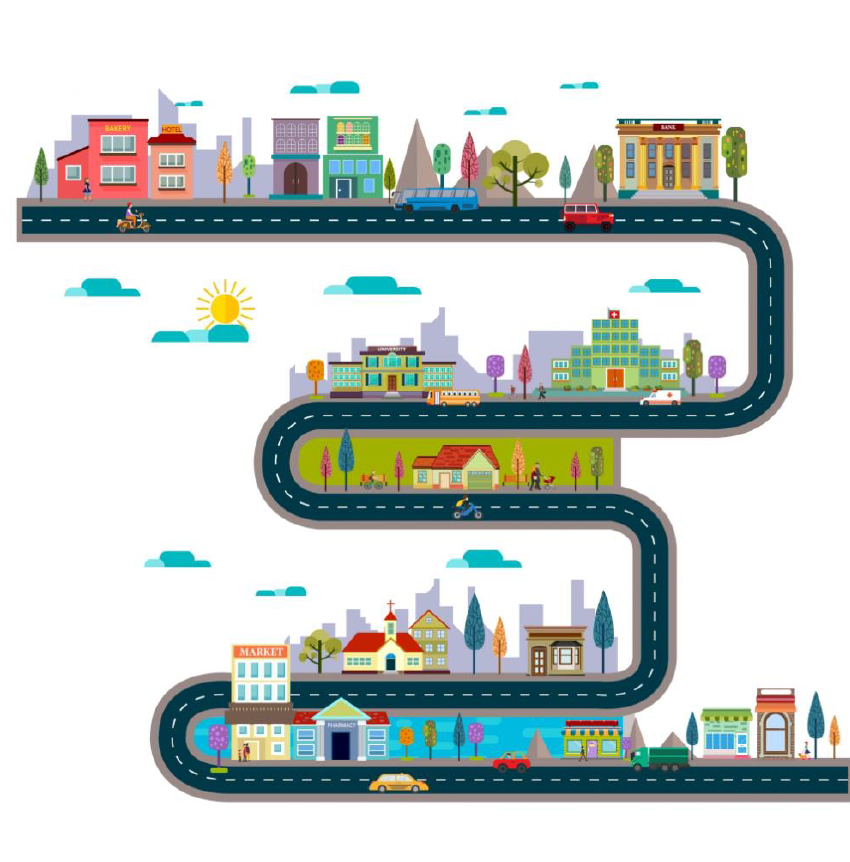
Image courtesy of Ramboll Environ
Regardless of whether the administrators for any city possess adequate engineering solutions or not, combining available information with the communication networks and channels available via IoT and social media feeds will help the city administrators tackle the challenges for the people, organisations and society, thereby improving preparedness, health emergency issues, food and potable water accesses, etc. Additionally, flood water management and reutilisation could also be planned where possible. Overall, with the application of soft approaches on the back of available data and communication tools, the resiliency of cities in Southeast Asia against flood events would improve at no significant cost.
Hence, the roles of softer approaches alongside hard engineering solutions are complementary. The softer solutions will not only help the communities prepare in advance against an impending disaster, but also provide inputs and contextual considerations in the selection of engineering solutions and design.
ER TAN SENG CHUAN
REGIONAL MANAGING DIRECTOR (ASIA-PACIFIC)
RAMBOLL ENVIRON SINGAPORE PTE LTD
Er Tan Seng Chuan graduated from the National University of Singapore with a degree in Civil Engineering and obtained Master of Science in Building Science in 1983 and 1991, respectively. He is a Professional Engineer and Chartered Engineer for Environmental and Water registered in Singapore; Chartered Professional Engineer registered in Australia; and ASEAN Chartered Professional Engineer as well as Registered APEC Engineer. He was conferred Honorary Fellow of The Institution of Engineers Singapore and Engineers Australia, as well as ASEAN Federation of Engineering Organization Honorary Fellow.
Er Tan is the Regional Managing Director for Asia-Pacific at Ramboll Environ. He is responsible for strategic planning, setting business direction and development of business in Asia and the Pacific to meet the enterprise’s targets and objectives. He is also responsible for the operation of offices in Singapore, Malaysia, Myanmar, China, Hong Kong, India, Australia and New Zealand. He has extensive professional experiences on environmental, engineering and programme/project management in the area of climate resilience, water and wastewater, oil and gas, energy and power, chemical and petrochemical, building and construction, industrial plant, mass rapid transit and other infrastructure projects in Asia and the Pacific.
Since 2006, Er Tan has been the chairman of PUB’s Active, Beautiful, Clean Waters (ABC Waters) Programme, ABC Water Professional Monitoring Committee, which strategies practice and training initiative to improve the quality of water and mitigate the impact of climate change. He also chaired the World Engineers Summit (WES) on Climate Change in 2013 and 2015, and the Industry Round Table at WES 2015 on Climate Change Mitigation and Adaptation as well as building climate change resilience in the community.
RAHUL KAR
TECHNICAL DIRECTOR (CLIMATE CHANGE AND SUSTAINABILITY)
RAMBOLL ENVIRON SINGAPORE PTE LTD
Rahul Kar graduated from the Bengal Engineering College (University of Calcutta) with a degree in Civil Engineering in 1993 and completed masters in Environmental Engineering in 1995 from Jadavpur University. Since then, he has been a practising consultant covering management, engineering and finance. He specialises in climate policies, climate mitigation, climate adaptation and resiliency, and climate finance. He has worked at both engineering and accountancy firms in the past 22 years.
He has delivered projects in Belgium, Cambodia, China, India, Indonesia, Iraq, Kenya, Laos, Malaysia, Myanmar, The Netherlands, Papua New Guinea, Philippines, Qatar, Saudi Arabia, Singapore, South Africa, UAE, Vietnam, Zambia and Zimbabwe.
His projects covered a wide range of sectors including urban infrastructure such as buildings, roads and transport, public utilities like water and wastes, power generation and distribution, various industries and manufacturing enterprises, and forestry.
He was a team member in the ‘Sustainability and Responsibility’ team at the British Chamber of Commerce in Singapore. He advised the Singapore Business Federation (SBF) with the annual design and conduct of the Singapore Sustainability Awards since its inception in 2010. He is also a member in the Greenhouse Gas working group at SPRING Singapore.
RAMBOLL
Owned by Ramboll Foundation and operating since 1945, Ramboll Group companies provide independent engineering and design consultancy and management consultancy in 35 countries through 300 offices and 13,000 professionals. They are particularly strong in the Nordics, United Kingdom, North America, Continental Europe, Middle East and Asia-Pacific, combining experience in buildings, transport, water, energy, environment and health, urban planning and design and management consultancy.






